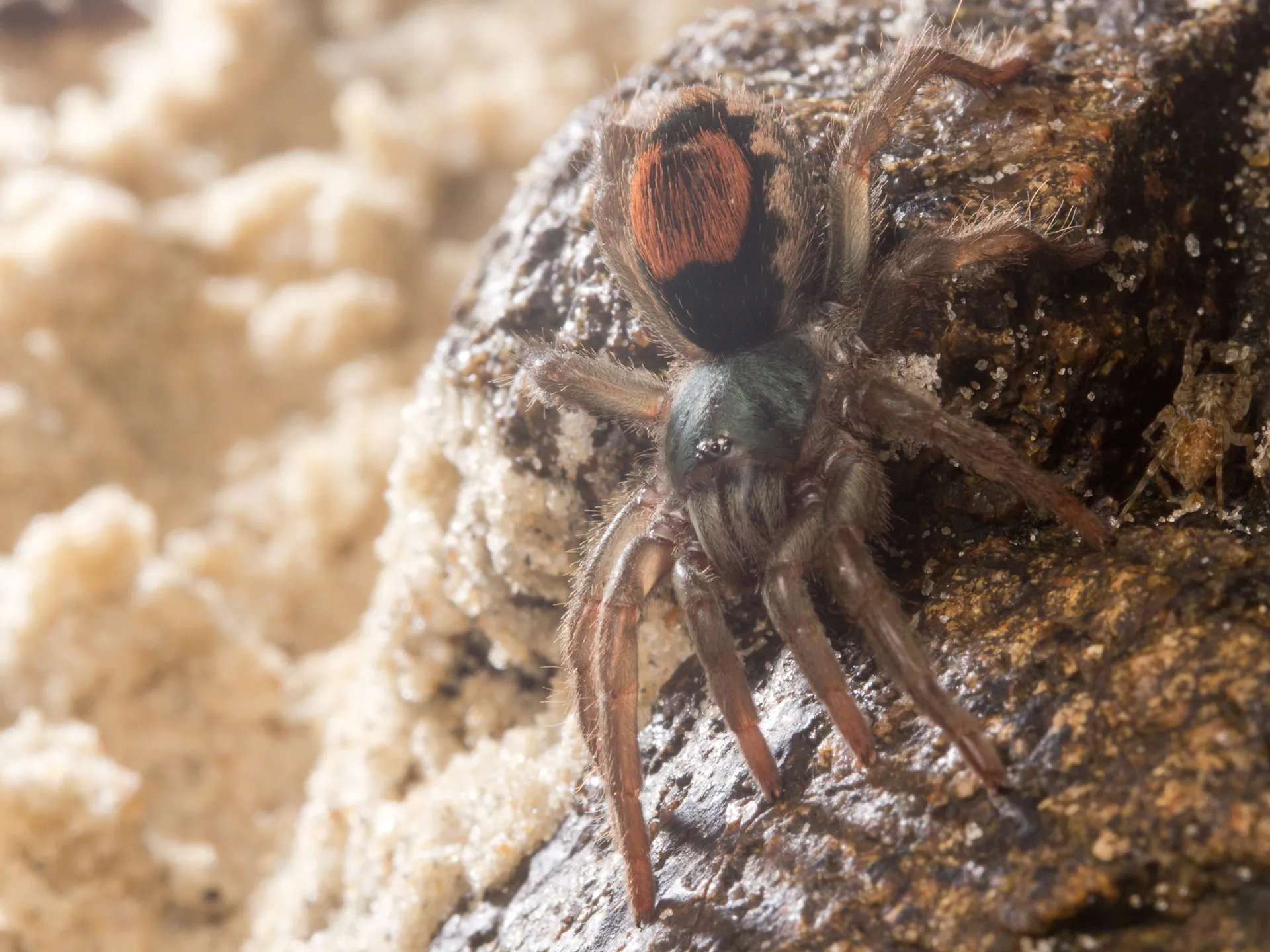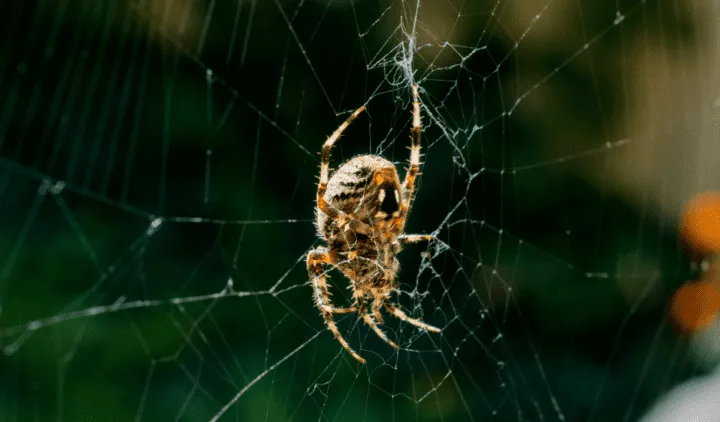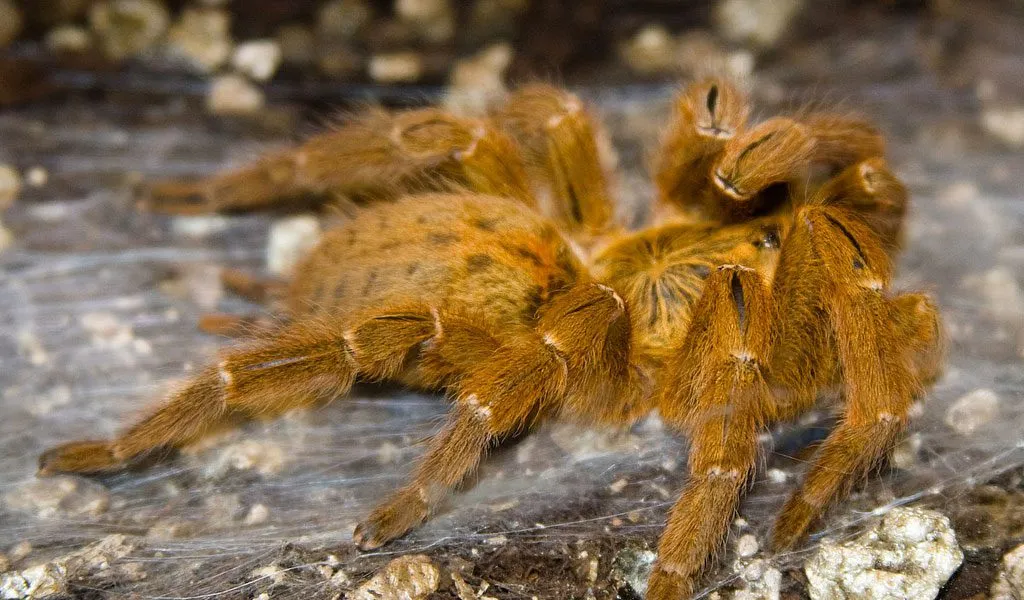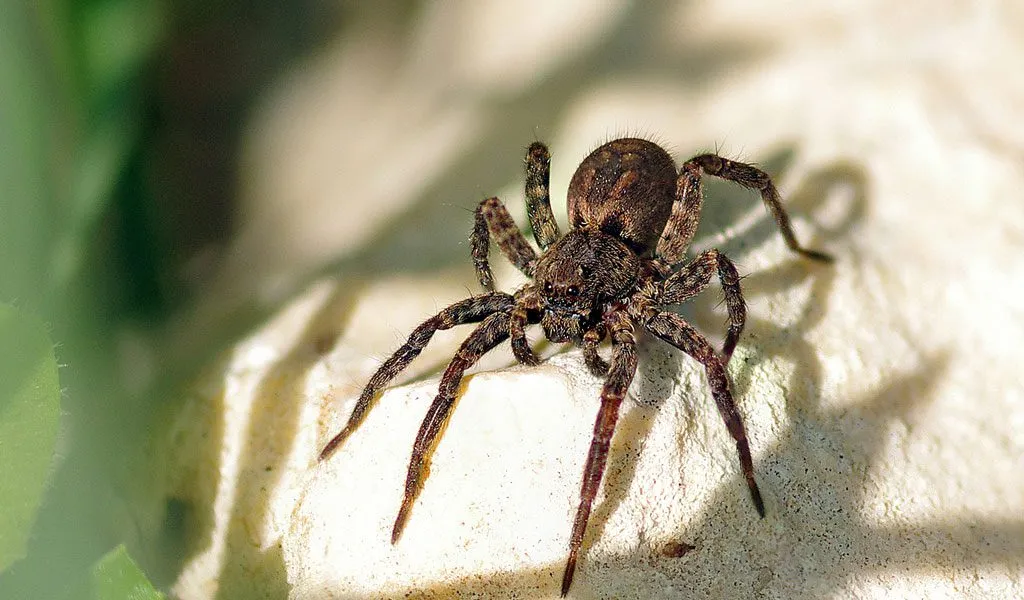What Exactly is a Tarantula?
Tarantulas are large, hairy spiders belonging to the Theraphosidae family. They are known for their impressive size, often exceeding a leg span of 6 inches, and their generally docile nature compared to other spider species. These creatures are found in various habitats around the world, primarily in tropical and subtropical regions. They are primarily nocturnal hunters, feeding on insects, and sometimes small vertebrates. The fascination with tarantulas often stems from their imposing appearance and their often misunderstood behavior. Understanding what a tarantula is, beyond just a large, hairy spider, is crucial to appreciating their place in the natural world and answering the fundamental question of whether they are, in fact, spiders.
Characteristics of Tarantulas
Tarantulas share several key characteristics that distinguish them from other types of spiders. They have eight legs, two body sections (cephalothorax and abdomen), and two specialized mouthparts called chelicerae, which are equipped with fangs. Their bodies are covered in hairs, some of which are urticating hairs used for defense. These hairs can be flicked off the abdomen and cause irritation to predators. Tarantulas also have spinnerets at the end of their abdomen, which they use to produce silk for various purposes, including creating burrows, lining their nests, and laying their eggs. The combination of these physical features, along with their predatory lifestyle, paints a detailed picture of what makes a tarantula unique within the arachnid family.
Tarantula Body Structure

The body of a tarantula is divided into two main sections: the cephalothorax (fused head and thorax) and the abdomen. The cephalothorax houses the tarantula’s brain, mouthparts, eyes, and legs. It is covered by a hard carapace that provides protection. The abdomen is soft and flexible, containing the digestive system, reproductive organs, and silk-producing spinnerets. The overall structure is designed for both movement and the efficient processing of food. This basic body plan is characteristic of all spiders, including tarantulas, demonstrating a fundamental link in their biological classification. The detailed anatomy reveals adaptations for a predatory lifestyle and survival in diverse environments.
Tarantula Leg and Movement
Tarantulas have eight legs that are covered in sensory hairs and claws, which aid in climbing and gripping surfaces. Their legs are segmented, allowing for flexibility and agility. The way they move is a key aspect of their predatory behavior. They can move surprisingly fast, both forward and backward, and use their legs to feel vibrations in their environment, helping them detect prey or potential threats. The length and thickness of the legs also vary depending on the species, with some tarantulas having longer legs adapted for burrowing or climbing, while others have shorter, stockier legs for a more terrestrial lifestyle. This diversity highlights the adaptation to different habitats and hunting strategies.
Are Tarantulas Spiders? Fact 1
Yes, tarantulas are indeed spiders. This is because they belong to the order Araneae, which encompasses all spiders. The classification is based on a variety of shared characteristics, including body structure, the presence of eight legs, and the production of silk. Being a spider is a broad classification, with thousands of different species falling under this umbrella. However, this also means that tarantulas share the fundamental features that define what a spider is. The similarities are more than just superficial; they are deeply rooted in their evolutionary history and the way their bodies and behaviors have adapted to their environment.
Tarantulas Belong to the Arachnid Class

Spiders, including tarantulas, belong to the class Arachnida, which is a broader classification that also includes scorpions, mites, and ticks. The class Arachnida is characterized by having eight legs, a body divided into two main sections (cephalothorax and abdomen), and the absence of wings or antennae. Within this class, spiders are further distinguished by their ability to produce silk and their specialized mouthparts. The Arachnida class reflects a shared ancestry and basic body plan, with variations evolving across different orders and families to adapt to specific ecological niches. This hierarchical classification helps scientists understand the evolutionary relationships between these creatures.
Tarantulas are Arthropods
Arachnids, and therefore tarantulas, are arthropods. Arthropods are a very diverse group of animals characterized by an exoskeleton (external skeleton), segmented bodies, and paired jointed appendages. This large phylum includes insects, crustaceans, and myriapods, as well as arachnids. The exoskeleton provides protection and support but requires molting for growth. Jointed appendages allow for flexible movement. This broader classification highlights the tarantula’s place in the larger animal kingdom and reveals its connection to other invertebrates. The defining characteristics of arthropods are key to their survival and evolution, shaping everything from their physical appearance to their behaviors.
Are Tarantulas Spiders? Fact 2
Tarantulas share a significant number of traits that confirm their identity as spiders. These include their basic body plan, the presence of spinnerets for silk production, and their use of venom to subdue prey. The similarities are more than just a matter of appearance; they are reflected in their internal anatomy and physiology. While tarantulas have some unique characteristics that set them apart from other spider families, these differences do not negate their fundamental classification as spiders. These traits show a shared ancestry and a common evolutionary path.
Similarities Between Tarantulas and Spiders

Both tarantulas and other spiders have eight legs, two body segments (cephalothorax and abdomen), and chelicerae with fangs. They are predators, using their fangs to inject venom and immobilize their prey. Both groups also use silk for various purposes, such as building webs, creating egg sacs, and providing a retreat. Furthermore, their internal organs, such as the digestive and circulatory systems, share fundamental similarities. These shared traits clearly demonstrate that tarantulas are a type of spider, reinforcing their close relationship within the arachnid family. The underlying biology is fundamentally the same, despite variations in size and specific adaptations.
Webbing and Silk Production
While not all spiders build elaborate webs, all spiders, including tarantulas, produce silk. Tarantulas use their silk primarily for creating burrows, lining their nests, and creating draglines. They may also use silk to wrap prey or to protect their eggs. The silk produced by spiders is incredibly strong and versatile, with different types of silk used for different purposes. Although tarantulas may not construct intricate webs in the same way as some other spider species, their use of silk is fundamental to their survival and plays a critical role in their hunting and nesting behaviors. The ability to produce silk is a hallmark of the spider order and is shared by all its members.
Venom and Fangs
Tarantulas, like all spiders, use venom to subdue their prey. Their fangs are attached to their chelicerae and are used to inject venom into their victims. The venom of tarantulas is not generally considered dangerous to humans, often causing only mild symptoms. The primary function of the venom is to paralyze or kill their prey, allowing the tarantula to consume it. The fangs and venom delivery system is a critical adaptation for a predatory lifestyle, enabling tarantulas to effectively hunt and survive. This shared feature underscores their fundamental classification as spiders, even though the potency of the venom varies across different species.
Are Tarantulas Spiders? Fact 3

While tarantulas are undeniably spiders, some differences set them apart from other spider families. These differences often relate to their size, lifestyle, and behavior. Understanding these distinctions helps appreciate the diversity within the spider order and the adaptations that have allowed tarantulas to thrive in different environments. The variations between tarantulas and other spiders do not change their basic classification but add nuance to our understanding of the species.
Differences Between Tarantulas and Spiders
Tarantulas are generally larger and hairier than most other spiders. They tend to be less agile hunters than web-spinning spiders and often rely on ambushing prey. Their life spans are also typically longer, and many species are relatively docile. Web-spinning spiders, on the other hand, often have a more delicate build and use intricate webs to capture their prey. The ways of hunting, the nature of their webs (if they build any), and the physical characteristics of tarantulas and other spiders clearly differ. Some spiders also have more potent venom than tarantulas. While all spiders share the fundamental characteristics, these variances reflect the diversity within the spider order.
Habitat and Lifestyle
Tarantulas often live in burrows or under rocks, whereas web-spinning spiders build their webs in more open spaces. The lifestyle of tarantulas is often more solitary. They typically ambush their prey rather than actively chasing it. Web-spinning spiders, by contrast, actively seek out and capture prey in their webs. The habitats of these spiders also vary widely. Tarantulas can be found in terrestrial environments, in underground burrows or under the shelter of plants, whereas web-spinning spiders take advantage of the environments in which they can construct webs. These differences in habitat and lifestyle reflect adaptations to different ecological niches.
Size and Appearance

The size of tarantulas varies greatly, with some species having a leg span of up to 12 inches. Most web-spinning spiders are considerably smaller. Tarantulas are generally more robust and hairy, while web-spinning spiders tend to have a more slender build. This is a factor in how they find prey. The appearance varies depending on the species and their environment. Tarantulas often display vibrant colors and patterns, while other spiders may have camouflage to blend in with their surroundings. These differences in appearance are significant adaptations to different hunting methods and habitats.
Are Tarantulas Spiders? Fact 4
The diversity within the tarantula family itself provides further evidence of their classification as spiders. There are many different species of tarantulas, each with unique characteristics and adaptations. The wide range of tarantulas further highlights the flexibility and adaptability that the spider order shows. The features of various tarantula species are more related to one another than to different spider orders.
Tarantula Species Diversity
There are over 900 different species of tarantulas, each varying in size, color, and habitat. These species are found worldwide, each with a different set of characteristics adapted to their environment. They exhibit a great variety of adaptations related to their diet, their habitat, and their defensive behaviors. This impressive variety is a testament to their evolutionary success and their ability to thrive in a wide range of environments. This diversity also illustrates the broad range of adaptations within a single family of spiders.
Worldwide Tarantula Species

Tarantulas can be found on every continent except Antarctica. Some species have adapted to tropical rainforests, while others live in deserts or grasslands. This wide geographic distribution demonstrates their adaptability and resilience. Their presence across so many continents is an indicator of their success as a species and their ability to populate the diverse environments that the world offers. The wide geographical variety is also reflected in the various local species.
Common Tarantula Species
Some common tarantula species include the Chilean rose hair tarantula (Grammostola rosea), the Mexican red-kneed tarantula (Brachypelma hamorii), and the Goliath birdeater (Theraphosa blondi). These are each distinct in their size, color, and behavior. Each species has its unique characteristics, from the docile nature of the Chilean rose hair to the immense size of the Goliath birdeater. Studying common species provides insight into the broader diversity within the tarantula family. They offer a glimpse into the adaptability and diversity found within the spider order.
Are Tarantulas Spiders? Fact 5
The role that tarantulas play in their ecosystems further confirms their place within the spider family. As predators, they help regulate insect populations, contributing to the balance of nature. Understanding this role sheds light on their importance. This important role also highlights their connection to other spider species.
The Role of Tarantulas in the Ecosystem
Tarantulas are important predators that help control insect populations. They feed on a variety of insects, small vertebrates, and other invertebrates, preventing overpopulation. They, in turn, become prey for larger animals, such as birds, mammals, and other reptiles. This highlights the interconnectedness of life in the ecosystem. The role of tarantulas is critical to the health of their local ecosystems. The relationships with other creatures demonstrate the importance of these spiders in the balance of nature.
Tarantulas as Predators
Tarantulas are ambush predators. They wait patiently for prey to come within striking distance before they pounce. They inject venom into their prey, paralyzing or killing it before they consume it. Their predatory behavior is a key characteristic of spiders. They hunt in this way because of their anatomy and the environments where they live. This predatory role demonstrates the adaptability of tarantulas within their ecosystem.
Tarantulas and Humans
Tarantulas sometimes interact with humans, both in the wild and as pets. While they are not generally considered dangerous to humans, they can bite if provoked. The bites are rarely fatal, but can be painful. Many people keep tarantulas as pets. They are popular among reptile and arachnid enthusiasts. The interaction between humans and tarantulas is another point in their role as a natural species, even though they are frequently misunderstood and sometimes feared. These interactions and our understanding of them continue to evolve.
Tarantulas & Spiders: The Verdict
In conclusion, the answer to the question ‘Is a tarantula a spider?’ is a resounding yes. Tarantulas are spiders, belonging to the order Araneae. They share all the fundamental characteristics that define spiders, from their body structure to their use of silk and venom. The differences between tarantulas and other spider families are significant. These differences are primarily related to size, lifestyle, and habitat, but these differences do not change their core identity as spiders. The diversity of tarantula species and their important role in ecosystems provide further evidence that they are, undeniably, a type of spider. Understanding this relationship helps dispel misconceptions and appreciate the fascinating world of these amazing creatures.
